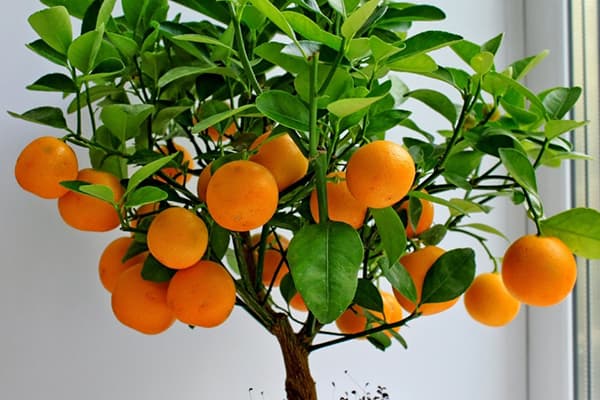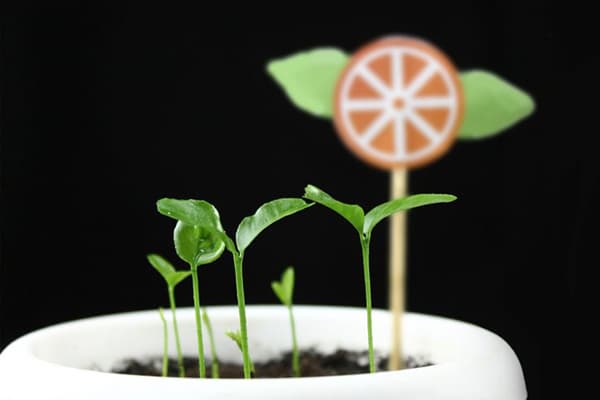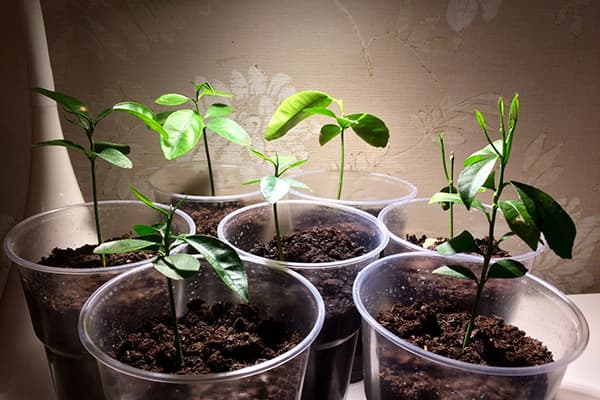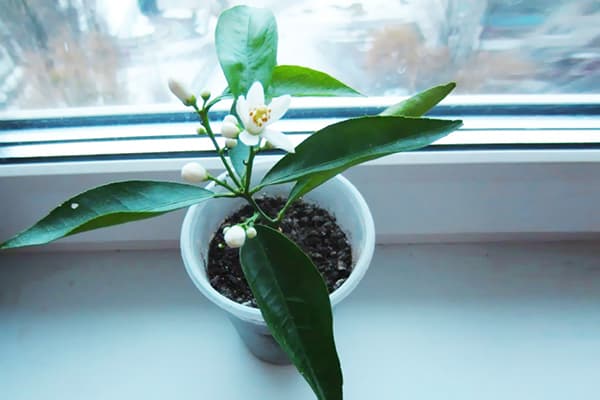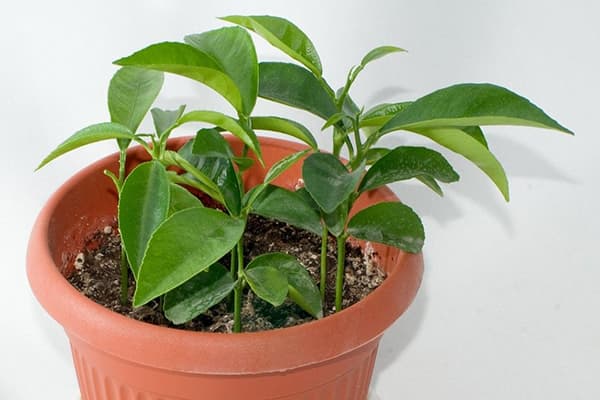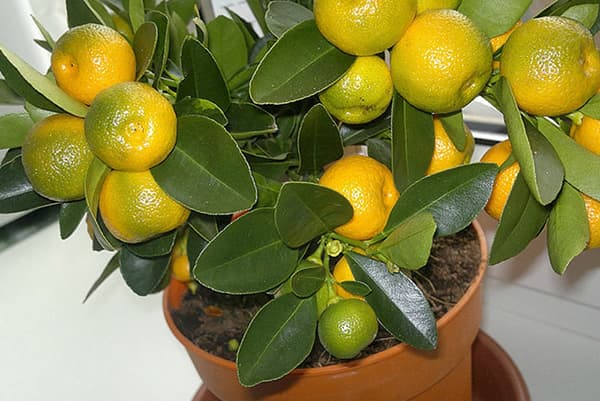How to quickly and correctly germinate a tangerine seed at home?
Content:
Finding seeds in citruses, many simply throw them into the bin. But in vain, because if you figure out how to sprout a seed of tangerine, you can grow a neat tree at home - it will show off on the windowsill in a few months. The leaves are juicy, shiny, bright green and very fragrant. Tangerine grown from scratch is a matter of pride. Follow the instructions and everything will work out!
Is it possible to grow a tree from a stone?
The cultivation of tangerine is affordable even for beginner indoor flower lovers. Mandarin seed sprouts in about 80% of cases. Many simply drop it in a pot to another flower, and after a month or two a green sprout appears from the ground.
Of course, it is better to plant several seeds at once. This will not only increase the chances of getting a seedling, but also subsequently allow you to select the most powerful, viable specimen.
For seed germination, it is better to choose a mandarin of one of the following varieties:
- Abkhazian early
- Sochi 23,
- Uzbekistan
- Unshiu
- Agudzera
- Kovano Vasya
- Miho Vasa.
They are good in that they grow up to 2 meters in height. At the same time, they are distinguished by large and sweet fruits.
Bone Germination Instructions
Tangerine seeds quickly lose their germination in the fresh air. Germination should be started immediately after it has been separated from the pulp of the fetus. Follow the simple instructions:
- Rinse the seeds under running water to remove any remaining pulp.
- Take cheesecloth, fold in 2 layers and moisten slightly. Wrap tangerine seeds inside and place in a warm place on a saucer. Rinse the gauze with seeds every day. Also for mandarin is the option of soaking in hydrogel. It is necessary to place the grains between the balls, pre-saturated with water. The duration of soaking can vary from 2 to 5 days. During this time, the seeds will wake up and swell. If quick shoots are not required, this item can be skipped.
- Prepare a pot with a drainage system: holes and expanded clay or its analog at the bottom. It is better to choose a small volume (up to 0.2 l). You can use a seedling box or disposable cups for germination (you need to make holes in the bottom with a hot needle).
- The soil can be taken in store, marked "for citrus." It is advisable to find one that will not contain peat, otherwise the substrate will turn sour, dry quickly and will not provide the necessary supply of nutrients. A soil mixture made independently from turf soil, leafy soil, river sand and rotten cow manure is also well suited for germinating mandarin (proportions - 3: 1: 1: 1).
- It is not necessary to deepen the bones strongly, 3-4 cm is enough. It is important to maintain a distance between them of at least 4-5 cm, otherwise the seedlings are entwined with roots, and subsequently it will be difficult to separate them from each other.
- Mandarin will sprout in 2-3 weeks. All this time you need to keep the earth moist and warm. The sprouts are shown most quickly when germinated on the battery and under a greenhouse bag that maintains moisture. However, the plant in this case gets used to the film and may die if it is abruptly removed. The coating is removed gradually over 1–2 weeks: first, the shoots are left open for 1 hour, then for 2 hours a day, and so on.
If you decide to sprout a seed of mandarin, it is best to do this in late December or early January. Then around February or March it will be possible to plant the strongest seedling in a permanent place. Compliance with the timing of planting ensures rapid growth and active development of the plant.
How does mandarin grow?
If you properly care for the seedling, then in six months it will reach a height of 10–15 cm, and in a year - 20–25 cm. At about the same time, the stem will begin to coarse and become wooden.
On the tangerine grown from seed, in addition to leaflets, thorns can grow. In fact, these are modified leaves characteristic of any citrus wild game.
With an increase of 25-30 cm, about 1.5-2 years, it is time to engage in molding. The tree forms a beautiful crown for another 1-2 years, after which it can bloom and bear fruit. Mandarin flowers are white, delicate and exude an amazing aroma.
Flowering stimulation
After completing the crown formation, you can safely stimulate the flowering of the tangerine tree. To do this, wrap a barrel of copper wire slightly above the root neck. The wire should not just hang, but tighten the plant, disrupting the movement of the juice. Six months later, it can be removed, and the damage site should be covered with garden var. Before this event, mandarin must be wintered in a cool room.
The mandarin pot cannot be rotated around its axis, otherwise the plant may begin to drop leaves or slow down growth. A turn is made gradually. Once every 2-3 weeks, the tree is rotated 2-3 cm or 10-15 degrees.
Care Features
In general, caring for a tangerine tree is simple - in this it is practically no different from other citrus fruits. Tangerines are often grown next to lemon, kumquat, grapefruit.
Plant care includes the following aspects:
- Watering. It is necessary to water tangerine sparingly, not allowing the land to completely dry out. In summer, the frequency of watering is recommended once every 2 days, in winter - 1 time in 5-7 days. Water needs to be used only standing, warm. In the heat, the plant must be sprayed with water in the morning and evening hours.
- Temperature. Mandarin needs warm summers and cool winters for normal development. In the summer months, the optimum temperature is 18–22 degrees, in the winter - 12–15 degrees. If you do not take care of the winter, most of the flowers on the tree will be fruitless. In the heat, it is useful to transfer the pot of wood to the balcony or the street.
- Lighting. Tangerine tree is recommended to be placed on the windowsill of the south or east window. He needs bright light and a daylight hours of 9-10 hours, including in winter. In winter, it is necessary to illuminate the plant with a phytolamp.
- Top dressing. A young, actively growing tangerine tree requires regular top dressing during spring and summer. Citrus fruits need a high content of potassium and magnesium. With a lack of nutrients, the foliage acquires a yellow tint. In this case, 1-2 teaspoons of Epsom salt (magnesia, magnesium sulfate) are poured over the soil. Top dressing is administered every 10-15 days, alternating: mullein diluted with water (1:10), complex fertilizer with nitrogen, phosphorus, potassium, wood ash (3 tablespoons per 1 liter of water).
- Transfer. The tree needs to be transplanted into a larger pot annually. It is better to do this in March. The plant is carried along with a lump of earth very carefully so as not to damage the roots.
- Crown trimming and molding. When the tangerine reaches a height of 25-30cm, the top of the stem is cut or pinched. This is necessary so that the tree branches, looks good and quickly enters the fruiting stage. Lateral shoots - branches of the 1st order - pinch at a length of 20–25 cm. Twigs of the 2nd, 3rd, 4th and 5th orders are shortened to 15–20 cm. After the mandarin has begun to bear fruit, prune each spring shoots on which the fruits hung, shoots growing inside the crown, as well as drying tips.
Citrus fruits appear only on branches of the 4th and 5th order.
Fruiting Mandarin Bone
Mandarin from the bone develops slowly and bears fruit not earlier than 10 years of age. For flowering, he needs comfortable conditions all year round. Some manage to see the first fruits only in the 20th year of the plant's life. They taste sour ("wild").
If you want to grow not only a beautiful tree, but also fruiting, you need to be vaccinated. Mandarin is inoculated in late May and early August, when sap flow occurs. As a stock, a seedling with a stem diameter of at least 6 cm is used. A T-shaped incision is made on it, where a “cultivated” fruit-bearing mandarin (stalk) is inserted, and the vaccine is wrapped with a film. For a month, the plant is placed in a greenhouse.
It is worth considering the fact that citrus vaccinations are poorly fused. But if everything works out, the fruits appear next year and are distinguished by good taste.
Today, real tangerines are almost never found. In supermarkets and grocery stores, hybrids are often sold under their guise. For example, clementines, very much like oranges in a reduced size. Hybrid tangerines have completely different properties. Many of them tolerate vaccinations well and bear fruit earlier.
Sprouting a seed of tangerine at home is completely uncomplicated. The main thing is to get down to business immediately after its removal from the fetus. To sprout seemed faster, the seed can be soaked. And some citrus connoisseurs recommend notching with a knife and removing the hard shell film. In any case, in the future, the seed will germinate in the ground, and it is worth approaching its choice responsibly. The soil must be necessarily with neutral acidity, without peat, loose. Optimum humidity and heat will do the trick, and a sprout of tangerine will appear in 10-20 days.
